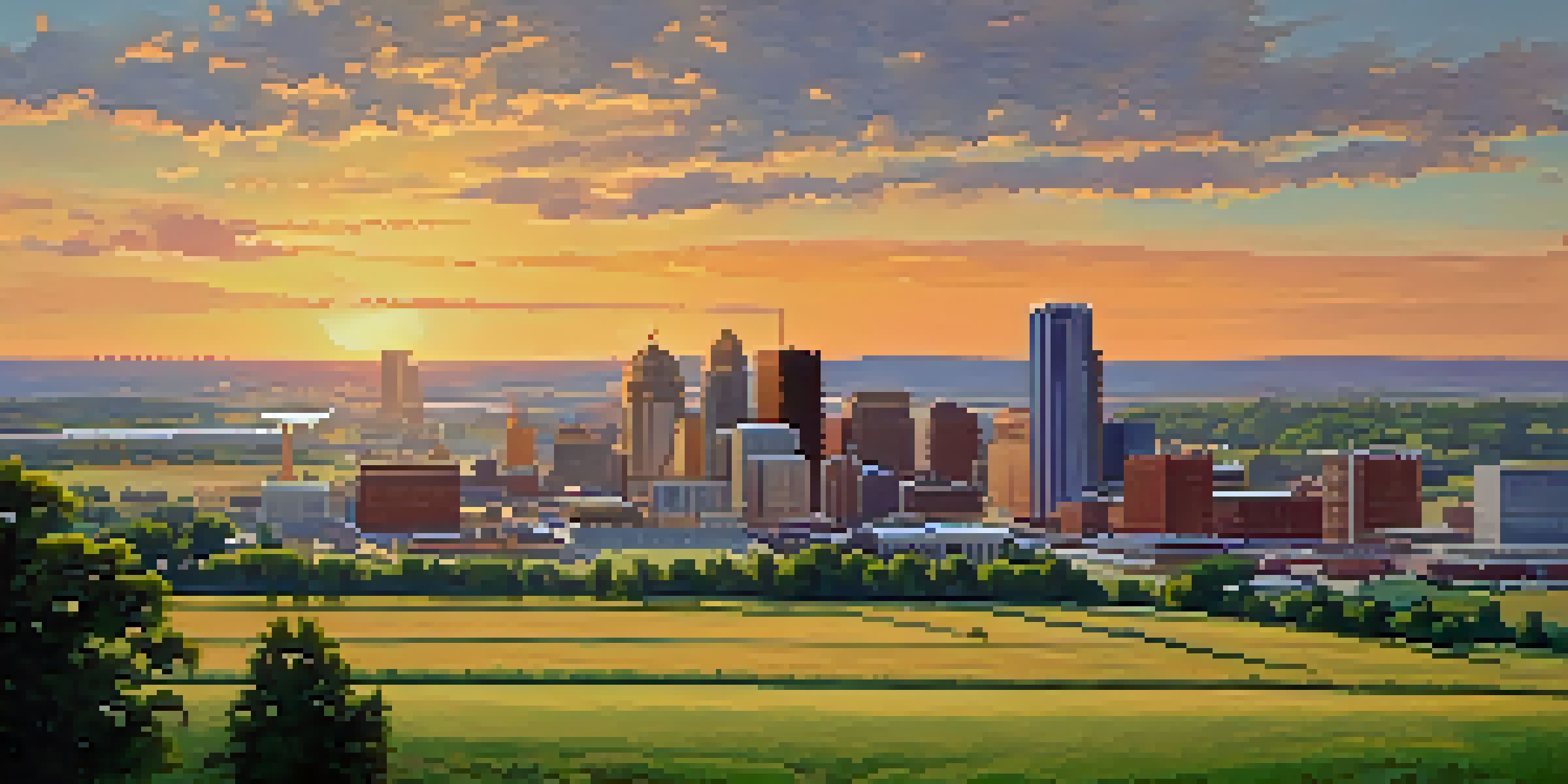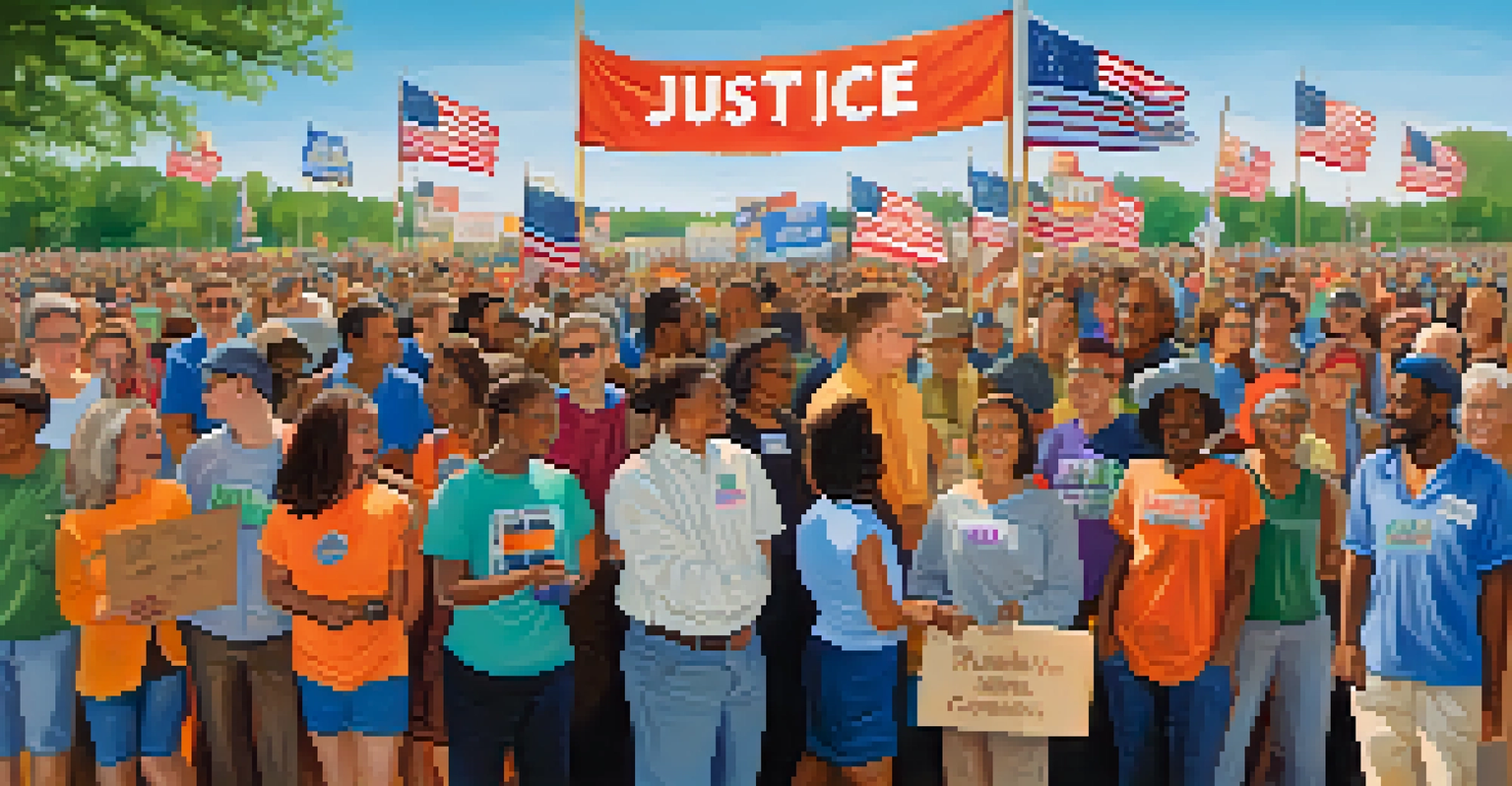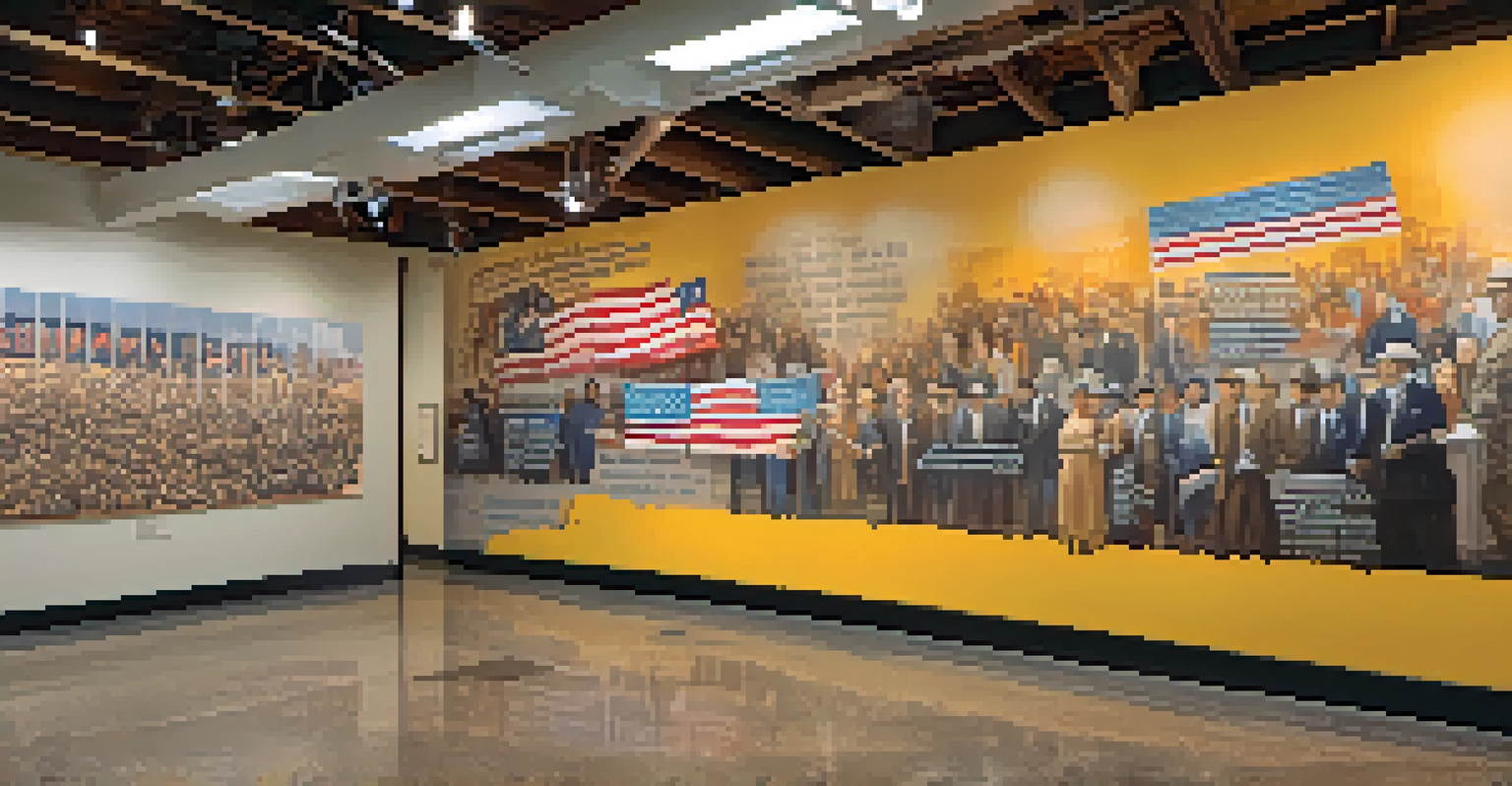Political Parties in Missouri: Influence and Dynamics

Understanding Missouri's Political Landscape
Missouri's political landscape is a dynamic tapestry woven from various ideologies and historical influences. The state has been a battleground for both major political parties, with each vying for power and influence. Understanding this landscape requires a look at its unique blend of urban and rural interests, which often leads to contrasting political views.
In politics, as in life, the only constant is change.
For instance, metropolitan areas like St. Louis and Kansas City tend to lean Democratic, while rural regions often support Republican candidates. This urban-rural divide shapes the policies and priorities of the parties, influencing everything from healthcare to education. By examining these trends, we can better grasp how Missouri's political dynamics function.
Moreover, the state's history plays a crucial role in its current political climate. Missouri has a rich history of political engagement, marked by key events such as the Civil War and the Civil Rights Movement, which continue to echo in its political discourse today.
Key Political Parties in Missouri
In Missouri, the two dominant political parties are the Democratic Party and the Republican Party. Each party brings distinct philosophies and agendas to the table, shaping the state's governance and policy-making. The Democratic Party often emphasizes social justice, healthcare reform, and economic equality, while the Republican Party typically champions fiscal conservatism, limited government, and individual freedoms.

Additionally, third parties, such as the Libertarian Party and the Green Party, have been making strides in recent years, pushing the traditional boundaries of Missouri's political discourse. Although they still face significant challenges in gaining widespread recognition, their presence adds a layer of complexity to the state's political dynamics.
Urban-Rural Divide Shapes Politics
Missouri's political landscape is significantly influenced by the contrasting views of its urban centers, which lean Democratic, and rural areas, which typically support Republicans.
Understanding the core beliefs and goals of these parties is essential for anyone looking to engage with Missouri's political landscape. The interactions between these parties often lead to lively debates and can significantly influence election outcomes.
Recent Elections: Trends and Outcomes
Missouri's recent elections have showcased shifting political trends and voter behaviors. In the 2020 presidential election, for example, the state continued its trend of supporting Republican candidates, reflecting a broader national trend. However, local elections have seen Democrats making noteworthy gains, particularly in urban areas, indicating a potential realignment in voter preferences.
Grassroots movements are the lifeblood of democracy; they empower ordinary citizens to shape their political landscape.
Voter turnout is another crucial factor influencing election outcomes. High turnout in urban centers often favors Democratic candidates, while lower turnout in rural areas can lead to Republican victories. Understanding these patterns helps to paint a clearer picture of Missouri's evolving political landscape.
Additionally, the impact of factors like demographic changes and social movements cannot be overlooked. Issues such as gun control, healthcare access, and education reform are increasingly mobilizing voters and shaping their choices at the ballot box.
The Role of Grassroots Movements
Grassroots movements have become a significant force in Missouri's political arena, influencing party dynamics and voter engagement. These movements often emerge in response to local issues, such as education funding or environmental concerns, mobilizing citizens to advocate for change. The power of grassroots activism lies in its ability to connect directly with the community, fostering a sense of ownership over local issues.
For example, initiatives surrounding criminal justice reform have garnered substantial support from grassroots organizations, pushing these issues into the political spotlight. Such movements not only challenge the status quo but also encourage increased voter participation and awareness.
Grassroots Movements Drive Change
Grassroots activism plays a vital role in shaping Missouri's political dynamics by mobilizing communities around local issues and encouraging voter participation.
Moreover, grassroots efforts can lead to the emergence of new political leaders who resonate with the community's values and needs. This evolution underscores the importance of local activism in shaping Missouri's political landscape and influencing party platforms.
Influence of National Politics on Missouri
National politics significantly influence Missouri's political environment, often dictating local party strategies and voter sentiments. With national issues like immigration, healthcare, and climate change dominating the headlines, local parties must align their platforms accordingly to resonate with constituents. This alignment can lead to shifts in party loyalty as voters respond to national narratives.
For instance, the rise of populist sentiments in national politics has found echoes in Missouri, with certain candidates leveraging these themes to gain support. This connection between national and local issues highlights the importance of understanding broader political trends when analyzing Missouri's political dynamics.
Additionally, Missouri's political leaders often use national issues to galvanize their bases, drawing on shared values and concerns. This interplay between local and national politics continues to shape the strategies employed by both major parties.
Demographics and Voter Behavior in Missouri
Demographic shifts play a crucial role in shaping voter behavior and party dynamics in Missouri. The state has seen changes in its racial, ethnic, and age demographics, which influence political preferences and voting patterns. For example, younger voters tend to lean more Democratic, while older generations often support Republican candidates.
Additionally, the growing diversity within Missouri's population contributes to evolving political attitudes. As communities become more multicultural, issues such as immigration and social justice gain prominence, prompting parties to adapt their messages and policies to appeal to a broader audience.
Demographics Influence Voting Trends
Shifts in demographics, including age and diversity, are critically influencing voter behavior and the strategies of political parties in Missouri.
Understanding these demographic trends is essential for political parties as they strategize for upcoming elections. By recognizing the changing landscape, parties can better connect with voters and address their specific concerns.
Future of Political Parties in Missouri
The future of political parties in Missouri is poised for transformation as voter demographics and political attitudes continue to evolve. With increasing activism and engagement, especially among younger voters, the political landscape may witness significant shifts in the years to come. Political parties will need to adapt their strategies to remain relevant and effectively address the concerns of their constituents.
Moreover, the rise of technology and social media is reshaping how political parties communicate with voters. These platforms provide new avenues for engagement and outreach, allowing parties to connect with constituents in real-time and respond to their needs more effectively.

Ultimately, the evolution of political parties in Missouri will depend on their ability to embrace change and remain responsive to the voices of their communities. As the political environment continues to shift, the importance of adaptability and engagement will be paramount for both major and minor parties alike.